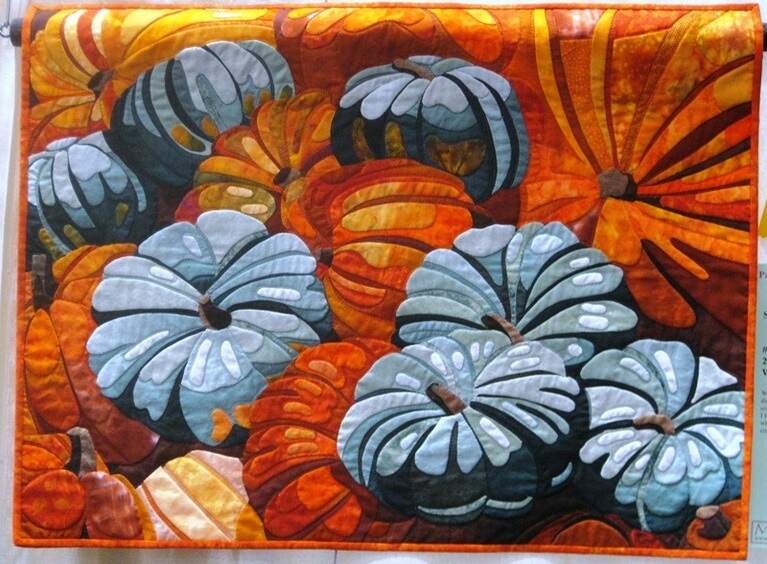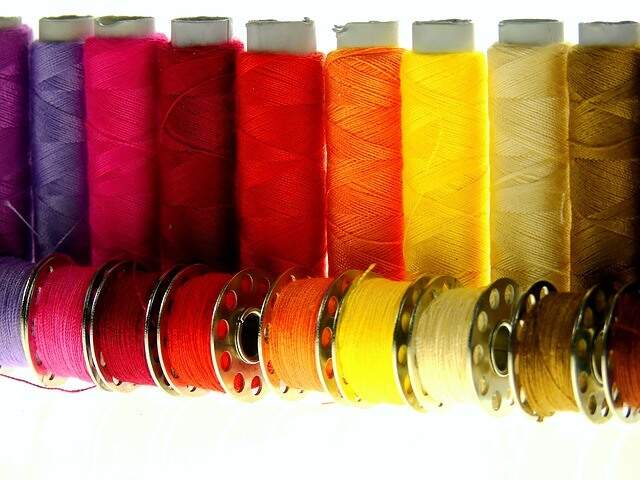Cotton Quilt Batting
The most popular choice among serious quilters, cotton batting is soft, washable, wears well, and shows off detailed stitching attractively. This quality is what makes it the batting of choice for quilts that will be entered in shows and competitions. Lately, 100% cotton has been getting some stiff competition from bamboo and bamboo blends, which are lighter and softer than cotton. You can also get batting which contains cotton blended with many other fibers, from polyester to silk and beyond.
This post is all about cotton batting: what’s good about it, what’s not so good about it, and what type of quilts you might want to use it for.
Loft (thickness or puffiness)
Low. A quilt made with cotton batting is thin, flexible, and feels a bit heavy for its size.
Cost ($ – $$$$)
$$. Cotton costs more than polyester, but less than wool, bamboo, or silk. Organic cotton costs more than conventional cotton.
Recommended Quilting Distance
This varies by brand. The highest quilting distance I’ve seen on a cotton batting package is 8″ (meaning that you can place your lines of stitching up to 8 inches apart and not experience shifting or other problems with your quilt.)
Pros
- Breathable, cool, and comfortable to sleep under.
- Absorbs some moisture, but not as much as wool or alpaca.
- Drapes well, keeps its shape after initial shrinkage.
- Softens with age, washing, and use.
- Good for machine quilting—its clinging quality helps keep the fabrics from shifting while you quilt, and minimizes the chance that you’ll quilt puckers into in the finished quilt.
- Shrinks and wrinkles the first time you wash it, which makes cotton ideal if you want your quilt to have an antique, puckered look. Use a different batting if you prefer a sleek, modern look.
Cons
- Needle-punched cotton batting isn’t desirable for hand quilting—it can be hard to push the needle through the dense mat of cotton fibers.
- Conventionally grown cotton carries a heavy load of petroleum-based fertilizers, pesticides, and in some cases, bleaches. Choose organic cotton or bamboo batting if you want to be a greener quilter.
Cotton Blends
These days, you can find batting that blends cotton with all kinds of other fibers: cotton/polyester, cotton/bamboo, cotton/wool, cotton/silk. I’ve even seen a batting called [amazon_link id=”B004XTXL7S” target=”_blank” container=”” container_class=”” ]Dream Orient[/amazon_link] from Quilter’s Dream that blends cotton with bamboo, silk, and Tencel®, a fiber made from wood pulp. If there are things you don’t like about cotton batting, using a blend can help reduce those problems and also introduces some of the good qualities of the other fibers in the blend.
My Personal Experience with Cotton Batting
When I first started quilting, I wanted to use natural fibers and avoid petroleum-based polyester batting. At that time, cotton was the only natural fiber I could find easily at the quilt store, so that’s what I used. I bought a huge roll of [amazon_link id=”B000YZ3RQA” target=”_blank” container=”” container_class=”” ]Warm and Natural batting[/amazon_link] with a half-off coupon at Joann Fabrics (a roll I’m still slowly using up, years later.) Here it is, on a stand my husband made for it:
Gradually I realized that I wanted to make lighter, warmer, and loftier quilts for my cool climate. I also discovered that conventional cotton wasn’t nearly as eco-friendly as I had originally thought. Conventional cotton is grown with huge amounts of pesticides and fertilizers. I also found machine quilting cotton batting on my sit-down sewing machine to be a real pain. I got very tired of dragging the heavy quilt sandwich around under the needle.
I tried wool batting (wonderfully lofty, warm and light, but hard to take care of) and polyester fleece fabric that substitutes for both the batting and the backing layers of my quilts. Fleece was lighter and warmer than cotton, but its stretchiness posed a whole new set of quilting challenges. Read more about quilting with polyester fleece.
I also made a couple of quilts with bamboo batting, which is softer and lighter than cotton, and also is grown organically. I’ve heard that bamboo batting doesn’t wear as well as cotton, but I gave away the quilts I made with bamboo, so I can’t report on how they are holding up.
Today, I mostly quilt with polyester fleece made from recycled plastic bottles . It’s easy to wash and comes in lots of fun colors and patterns. I use my cotton Warm and Natural for quilted wall hangings and art quilts. Once I use up that roll, though, I don’t think I’ll be buying another one. I’ll switch to organic bamboo instead of cotton.
Post photo by turtlemom4bacon, Flickr.com.





